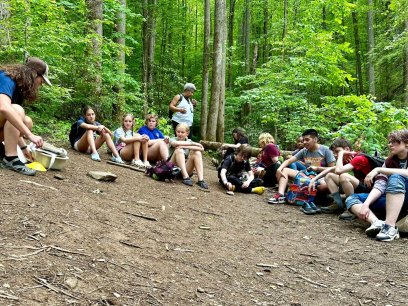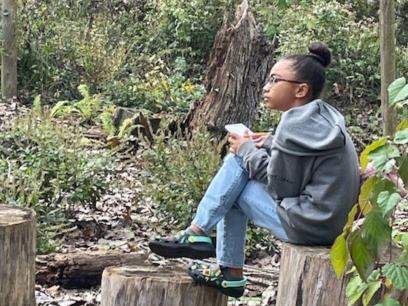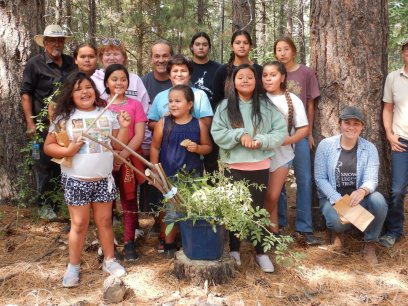
Tucker Garrett is used to getting his hands dirty. When you grow up in Grand Junction, Colorado—an area with unparalleled access to outdoor pursuits like hiking, rock climbing, and whitewater rafting—it comes with the territory. But an overnight rafting trip on the Colorado River, one of the most dramatic waterways in America, was something he’d never even considered.
“I’d been on day hikes and camping and stuff, but this was definitely out of my comfort zone,” said Garrett. “Rivers are kind of dangerous.”
He had been interested in nature and environmental science from a young age; interested enough, in fact, to write a letter to his guidance counselor at Central High School asking to be admitted into the school’s advanced placement STEM program, which landed him in Spencer Powell’s AP Environmental Science class as a freshman.
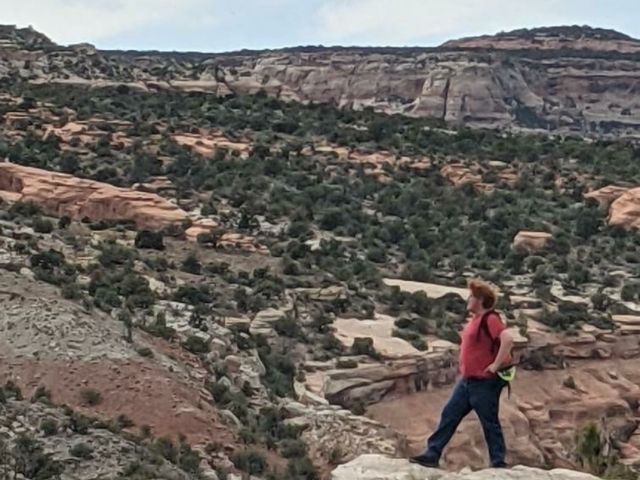
And then COVID-19 happened. By the time the fall school season rolled around, Garrett found the idea of another year of hybrid learning—of school in general—exhausting.
“COVID had such a weird effect on my brain,” he said. “I just felt like maybe I wasn’t cut out for this after all.”
So, in early 2021, when Powell told his class they could sign up for something called a “Greening STEM project” taking place that May, and which would involve spending their precious weekend hours monitoring invasive species in nearby McInnis Canyons National Conservation Area, Garrett was unmoved. What ultimately convinced him to join the trip was not a burgeoning love of science, or a Jack Londonian “call of the wild,” but an even more potent power among adolescents: peer pressure.
“My best friend was like ‘I’m gonna go, and you should totally go, too,’ but I still wasn’t sure,” laughed Garrett. “Eventually he convinced me, and I went home that day and had my mom sign [the release form] and that was that.”
What is Greening STEM?
The Greening STEM program is a collaboration between the National Environmental Education Foundation (NEEF), community partners, and public spaces to create an immersive outdoor learning experience that enriches STEM learning and creates a sense of place for youth.
“A Greening STEM project is more than just a field trip,” said Robert Sendrey, program director for environmental education at NEEF. “It’s an opportunity for educators to create enthusiasm for learning, provide real-world context, and build connections to STEM concepts for their students.”
For the 2020-21 Bureau of Land Management (BLM) Greening STEM Grant, NEEF worked with BLM to identify an existing management program that would make a good introduction for students to the concept of land management and how agencies like BLM protect biodiversity.
In this case, the Catalpa and May Flats area of the Colorado River within McInnis Canyons NCA seemed like a good place to start. A decades-long infestation of invasive Russian knapweed has taken hold in this area, choking out native species of vegetation and threatening federally protected species such as the Yellow-billed cuckoo, which requires a complex natural habitat to survive.
However, due to the site’s remote location and delicate habitat, traditional methods such as herbicide were not practical. Instead, BLM researchers called for the use of “biological control,” introducing another species that naturally preys upon Russian knapweed—the Russian knapweed gall wasp.
BLM Colorado already had a relationship with the Palisade Insectary, a local business that specializes in breeding species for biological control, but they needed someone to travel to the affected area, release the wasps, and monitor their progress. That’s where Spencer Powell’s environmental science class came in.
“The trip kind of fell into my lap,” said Powell, a science teacher with over 12 years of experience, five of them at Central High. An avid outdoorsman, Powell had chaperoned numerous field trips with his science classes and as a member of the Scouts, but was nevertheless impressed by the amount of thought and planning that went into this project.
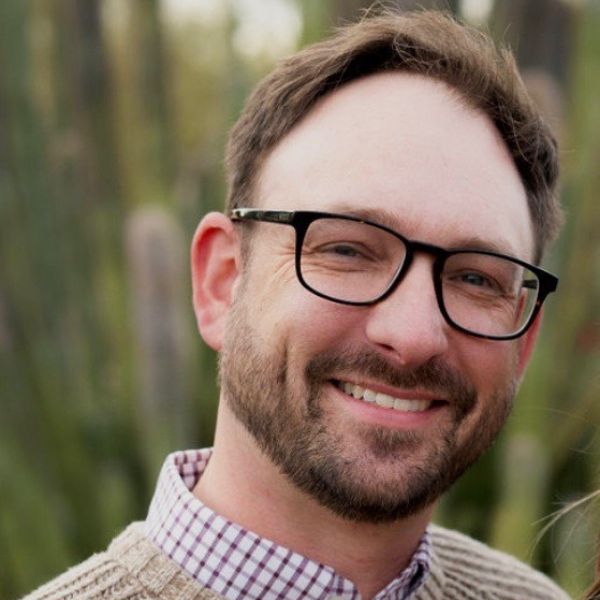
“BLM and the CCA (Colorado Canyons Association) handled the curriculum side, which matched what we were doing in the classroom,” he said. “They made it very easy—all I had to do was get the kids to the boat ramp and they took care of everything else, including gear and staff.”
Powell was determined to not let this unexpected reprieve go to waste.
“I took my fly rod with me and got to fish a little bit while I was there,” he said. “It was a pretty magical experience.”
Learning Beyond Your Comfort Zone
After a few hours of taking in the sights from the river, the group reached their campsite. Almost immediately, the vibe began to shift again for Garrett. While he and his best friend were attempting to set up the tent they would share, one of the main poles snapped, rendering it useless. They would have to share a (now very crowded) tent with two other classmates.
And then Garrett learned that the place where they would be conducting their invasive species monitoring—where they would be releasing the gall wasps—was only a few hundred feet from where they would be sleeping.
“I was like, ‘What? Wasps? They’re mean! They’re the least friendly bug,’” laughed Garrett. “But Mr. Powell assured me that this species was actually really docile, they’ll just do their job and that’s it.”
Encouraged by his teacher’s words—and perhaps a bit more peer pressure—Garrett decided to participate after all.
“I just decided to go with it and got to release some wasps myself, and you know, they really were chill,” he said. “So that was a fun learning experience.”
Providing Space for New Experiences
For Powell, the most interesting aspect of the trip was observing how his students reacted to their newfound unstructured time.
“Once we got out on the river, we weren’t in a hurry and nothing had to get done immediately until it was time to do the monitoring,” he said. “Letting them fill in those gaps [without modern distractions] was, to me, the most beneficial part of the experience.”
At camp, he and the other chaperones watched as the students began to relax and get to know each other better than they ever had while sharing a classroom.
“They all knew each other a little bit before the trip, but now they have this thing in common that they’ll share for the rest of their lives.”
They all knew each other a little bit before the trip, but now they have this thing in common that they’ll share for the rest of their lives.
Spencer Powell, science teacher at Central High School
Fostering a Sense of Purpose Through Stewardship
Interestingly, one of Garrett’s most vivid memories from the trip didn’t occur until they had already returned. Back in the classroom for the first time since their river trek, Powell read to the class from “The Lorax,” Dr. Seuss’s paean to environmental activism in the 1970s.
For Garrett, this moment helped crystallize the feelings he’d had since childhood.
“I always think of the end, when the Lorax disappears, and on the stone it says, ‘unless,’” he said. “Unless we make a change to improve the environment. That was when I realized this wasn’t about going out on the river and having fun with my friends. This was about changing the world.”
This wasn’t about going out on the river and having fun with my friends. This was about changing the world.
Tucker Garrett, former student at Central High School
Garrett said his experience with the Greening STEM project helped him rekindle his love of science and recommit to his studies. He worked hard during his sophomore and junior years to escape the COVID-related doldrums that tainted his introduction to high school.
“By senior year, I looked back and was like, ‘I’m still thinking about that trip,’" he said. “I thought about how much I loved STEM as a kid, and that I was able to make this positive impact on the environment. That’s the moment that certified it for me: science is the thing. I can change the world with this.”
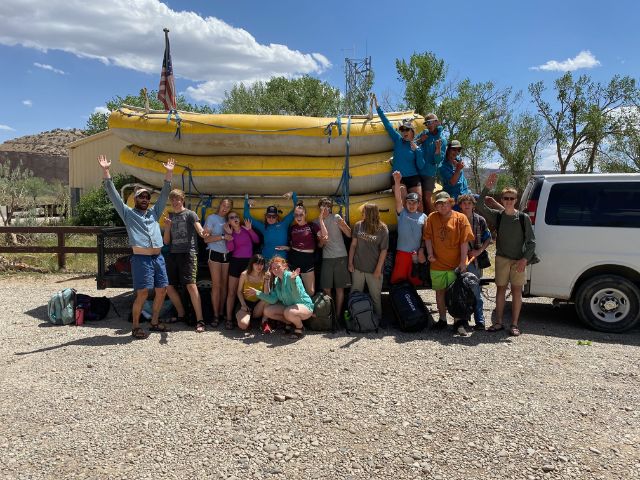
Now in his freshman year at Colorado Mesa University, Garrett’s major is currently undecided. However, when pressed, he admits his dream job would be an environmental scientist, to study and attempt to understand an environment that’s changing seemingly by the minute.
“If I could understand it, then maybe I could help make other small changes to help our planet.”
Community Partnerships are Key to Student Progress
Powell’s experience with the Greening STEM project at McInnis Canyons further reinforced his belief that hands-on, place-based environmental education activities should be a part of every student’s academic career, and that organizations like NEEF can make it easier for schools to implement these programs.
“NEEF was so instrumental in getting this project off the ground, and then CCA with their infrastructure to support it,” said Powell.
Looking back on it now, would Powell and Garrett recommend other schools consider Greening STEM projects of their own? While he believes that Greening STEM has major benefits for students, Powell underscored the importance of administrators and community members playing an active role alongside teachers.
“This project would never have happened if I didn’t have all that support,” he said. “After the first year, you’re so much more invested and willing to look for funding and partnerships. But that first year needs to be as easy as possible on the teachers.”
Garrett’s response was a bit more effusive.
“Yes. The answer is yes,” he said, without a hint of hesitation. “One day, when I have kids, if they ask me if they can go on a trip like this, I’ll be like, ‘Yep, go and learn and have fun!’”
Greening STEM Resources for Schools
If you’re interested in adapting the Greening STEM approach for your school, NEEF offers the following resources for K-12 educators, administrators, and parents:
- Greening STEM Hub: Resources to help you get started with a Greening STEM project, including examples of activities, lessons, and curricula.
- Greening STEM Projects: Explore successful Greening STEM projects around the country made possible by NEEF.
- Grant Notifications: Sign up for our email distribution list to be notified of future Greening STEM grant opportunities from NEEF.
